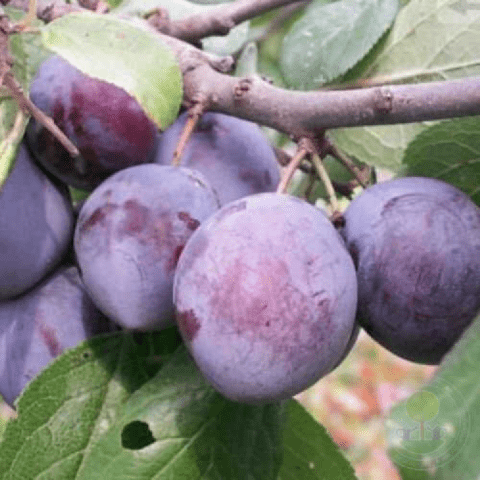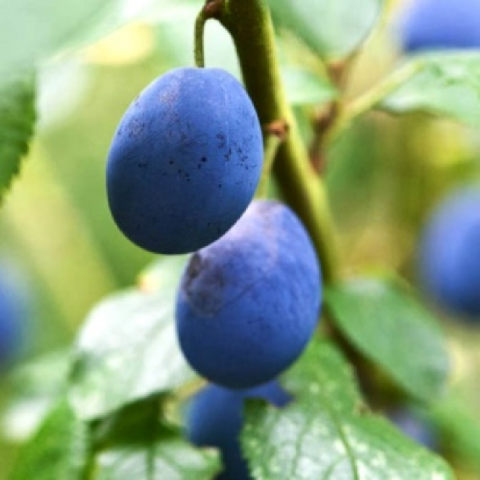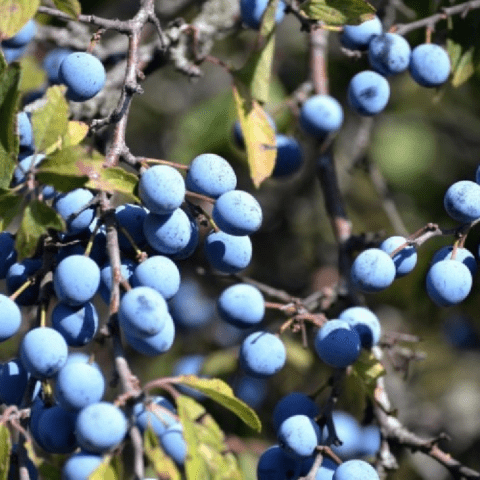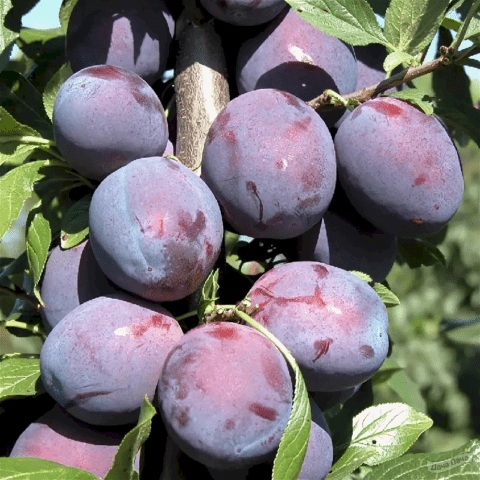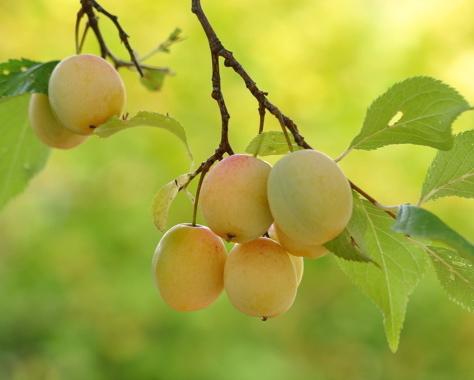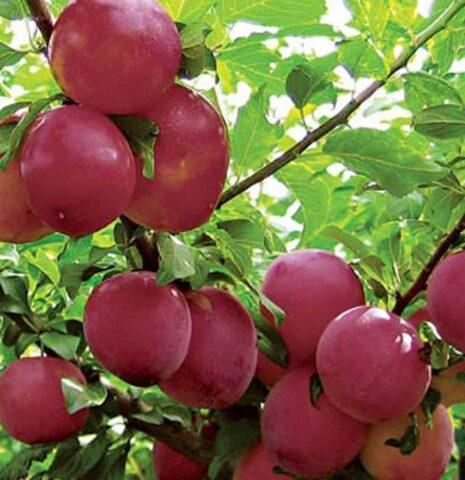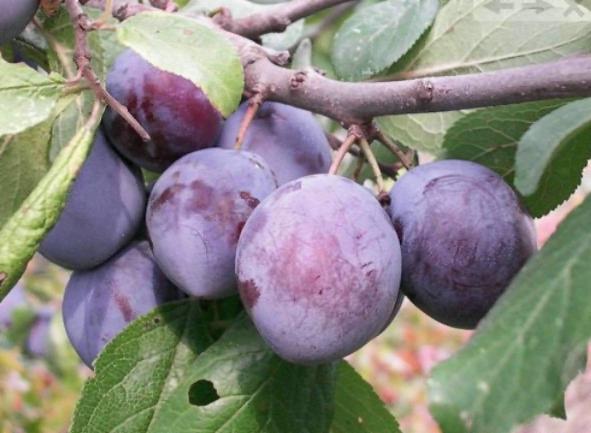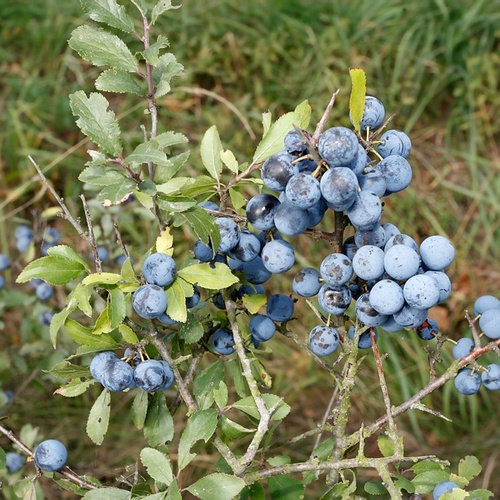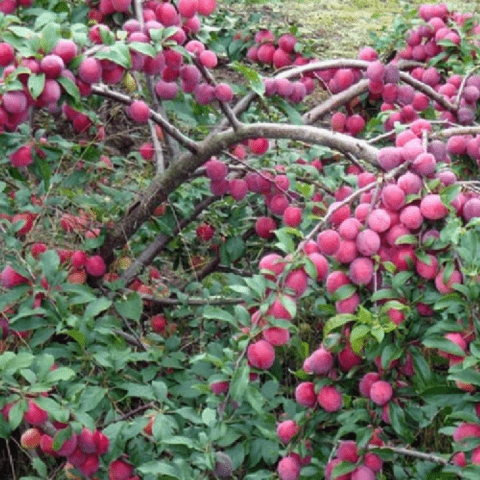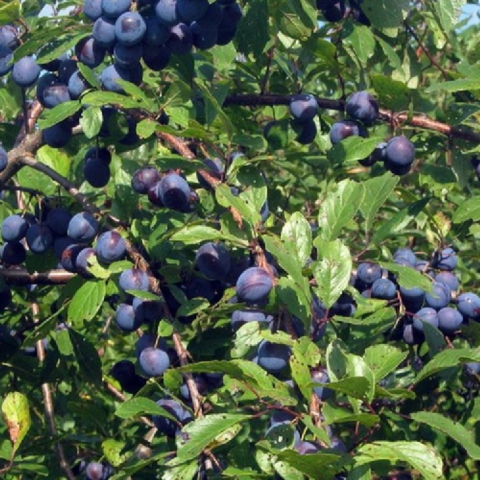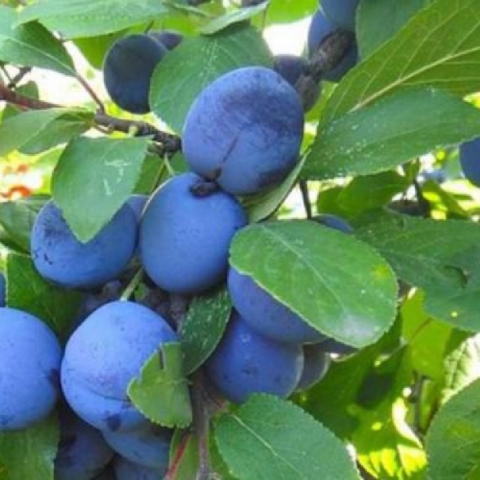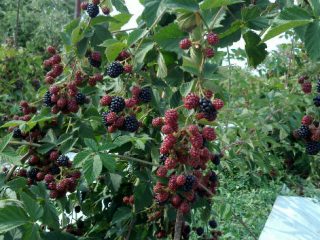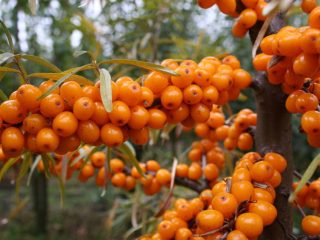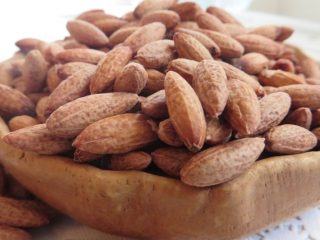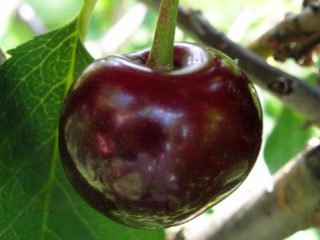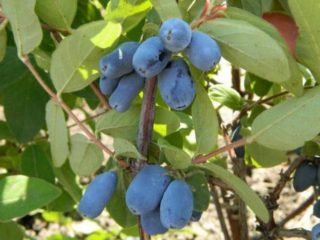Content
Thorn is a wild shrub belonging to the Rosaceae family and is one of the oldest plants. In different sources you can find names: black thorn, oat or sour plum, goat berry. The tart and sour fruits have beneficial properties and are used in cooking. Description and photo of sloe berries are presented below. They will allow you to learn a lot of interesting things about the plant.
Sloe: is it a berry or fruit?
Sloes are a wild variety of plum that belongs to the genus of stone fruit trees. Therefore, damson fruits are fruits. The concept of berry is broader in meaning. It is more correct to call the fruits of wild bushes fruits.
Botanical description of sloe
The garden thorn shrub (pictured) differs from a tree in its high ability to form roots. Due to the large number of basal shoots, blackthorn forms dense thorny thickets. The plant is not picky about soil and easily tolerates lack of moisture.
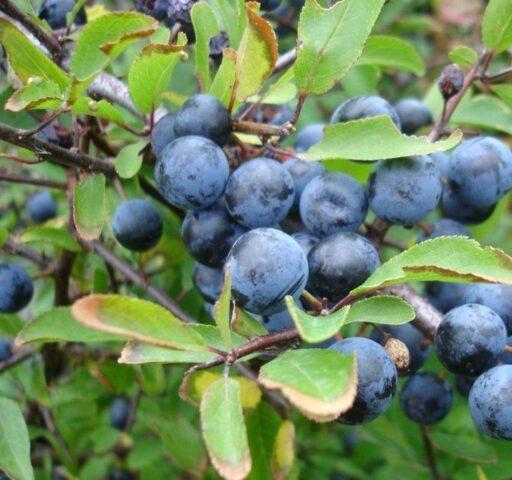
The shrubs are frost-resistant, can withstand frosts down to -40ᵒС
After freezing, the plant quickly recovers. Also, sour plum is resistant to sunburn and has immunity to most diseases inherent in the Rosaceae family. Because of this, sloe is often used as a rootstock for apricots, cherry plums or plums.
According to the description, it has an astringent taste. Sometimes thorns are observed on seedlings.
What does a bush look like?
The description of the thorn bush states that it is a tall plant, the height of which reaches 3.5-4.5 m. Trees are also found in nature; they grow up to 6-8 m. The tap root goes 1 m deep into the soil, and the branched root system may extend beyond the crown.
The description says that the plum is very prickly, but there are varieties without thorns. The leaf blades are elliptical in shape and have jagged edges. The leaves of the thorn reach 5 cm in length.
What do the fruits look like?
The description of the fruits of the prickly plum says that they are single-drug fruits. Outwardly they resemble plum fruits, but the weight ranges from 2 to 5 g, the diameter is on average 12 mm. They are round in shape. In a state of technical ripeness, the skin is dark blue, the flesh remains green. The top of the fruit is covered with a white waxy coating. Inside there is a wrinkled small bone that is difficult to separate from the pulp.
The description states that the crop is firmly held on the stalks. Ripening occurs in August. But the harvest can hang on the bush until the end of winter. The berries taste tart and sour. Sloes contain more vitamins than plums and cherry plums.
Varieties and varieties of sloe
A brief description of the most popular varieties of hybrid forms and the best varieties of sloe:
- Sweet-fruited TXSA is a high-yielding hybrid. The weight of the fruit reaches 35 g. Description of taste: the berry is sweet and sour. The stone is easily separated from the pulp, the tart taste is practically absent. The variety is popular in Siberia.
- Shropshire damson is the sweetest variety of sloe, which was obtained by breeders from England. According to the description, it is distinguished by tart honey-sweet fruits.
- Garden damson No. 2 is characterized by high yield (25-30 kg of berries are removed from the tree). The taste is excellent. The variety was obtained by Voronezh breeders. According to the description, it is characterized by high frost resistance.
- Prunes are a hybrid obtained by crossing sloe and cherry plum. The description of the berries indicates that the color varies from red to blue-yellow.
- Yellow-fruited is a hybrid form in the second generation. According to the description, the variety was obtained by crossing cherry plum and sloe. The berries are yellow in color, sweet, and pleasant to the taste.
- Cherry plum is a mid-late variety. The description says that the fruits are slightly tart, weighing 8.5 g. The berries are round in shape and colored violet-blue.
- Apricot is a hybrid form obtained from sloe and Asian black apricot. After removal from the tree, it is recommended to eat it within a few days. The harvest acquires a more pleasant taste with an apricot aftertaste. The description states that the fruits are blue.
- Fragrant 1 and 2 are a hybrid form obtained by crossing sloe and Toka plum. According to the description, the berries are flat-round in shape, have a sweet-sour taste, and are not at all tart.
- Cherry plum - fruits weighing 5-6 g are dark purple. Tart, sour.
- CROSS No. 1 is a light-loving, shade-tolerant tree.The berries weigh 6-7 g, are covered with a waxy coating, the skin is colored purple. The pulp is slightly tart, sweet and sour.
- KrOSS No. 2 has the same characteristics, but the description states that the berries are larger.
How does the thorn grow?
Blackthorn bushes (pictured) are planted in the ground in the spring, but the hole for it begins to be prepared in the fall. Over the winter, the soil in it will settle and settle. According to the description, the shrub feels good on sandy, saline and clayey soils saturated with nutrients.
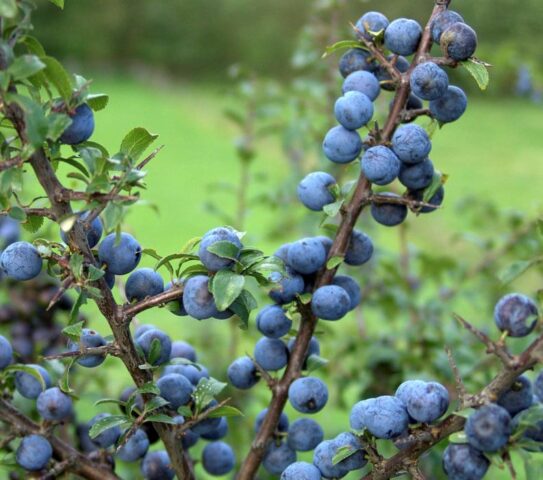
Thorn is not afraid of excess moisture, but for planting you should choose sunny areas
The diameter and depth of the hole is 60x60 cm. To prevent uncontrolled growth of shrubs, it is recommended to cover the edges of the hole with sheets of slate or iron. If you plan to create a hedge from the plant, the gap between the bushes is left to 0.5 m. If these are single plantings, the distance between neighboring seedlings is kept within 2-3 m.
Before planting, the damson root is immersed in a solution of a growth stimulator for 12 hours, after which the plant is planted with a wooden stake placed next to the seedling. The root collar is left 30-40 cm above the soil surface. After watering, it is necessary to mulch the tree trunk circle and tie the bush to a support.
Watering, fertilizing
After planting, the damsons are watered every week. When the plant takes root, reduce it to twice a month. Cold water is not suitable for this. If the summer is rainy, watering should be abandoned.
Once a year, complex mineral fertilizers or organic matter are applied to the tree trunk circle.With age, the bush's need for fertilizing increases.
Trimming
The pruning procedure is carried out in March, before the start of sap flow. Remove frost or disease-affected, dried and injured branches. Since the thorn (pictured) is prone to thickening the crown, the plant requires thinning (4-5 branches are left, the rest is cut out at the root) and formative pruning (most often in the form of a bowl).
In the autumn, pruning is carried out only if it is absolutely necessary (diseased or injured shoots are removed).
The procedure is carried out only when all the leaves have fallen from the bush.
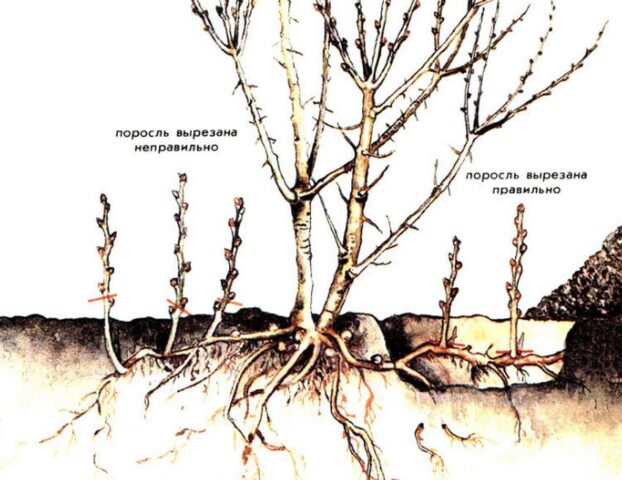
It is necessary to remove the growth by cutting off the root
When and how do thorns bloom?
The damson begins to bloom in April, before the leaves appear on the bushes. The plant exudes the aroma of almonds and is classified as a honey plant. Bees collect nectar from it. From a distance the bush resembles a large white ball.
Description of flowers: small, located on short peduncles singly and in pairs.
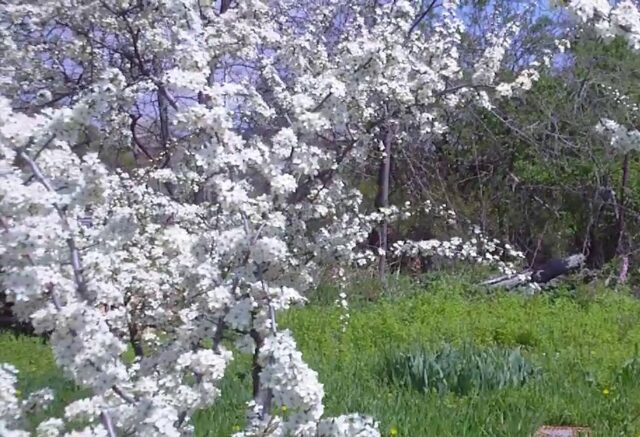
During flowering, the bushes are densely covered with snow-white petals.
Where do thorns grow?
Thorn bushes have been known to mankind since ancient times. The crop grows in a temperate climate zone. Located in the forest-steppe. Thorn also grows in the steppe, on roadside areas, forming impenetrable thickets.
Shrubs are planted in ravines and on the banks of reservoirs. The roots of the damson prevent soil erosion and strengthen slopes well.
In the Caucasus and Crimea, thorns can be found at an altitude of 1.2-1.6 km above sea level.The habitat of the prickly plum extends to the European part of Russia, Ukraine, Tatarstan, Iran, Asia Minor, and Western Europe.
Harvesting time for thorns
In addition to plums, the roots, bark, leaves and flowers of wild shrubs are harvested. Harvesting thorn fruits begins in the fall, when the first frosts have passed. After this, they lose their astringency and acquire a pleasant taste. To prevent the plums from being injured, it is recommended to cover the bottom of the container with fabric.
If the damson fruits are intended for transportation, harvesting is carried out when they just begin to ripen and become slightly soft. Select specimens without damage.
The root of wild thorns is harvested in the fall, and the bark is collected in the spring, before the bush begins to bloom. The most suitable time for harvesting leaves is August.
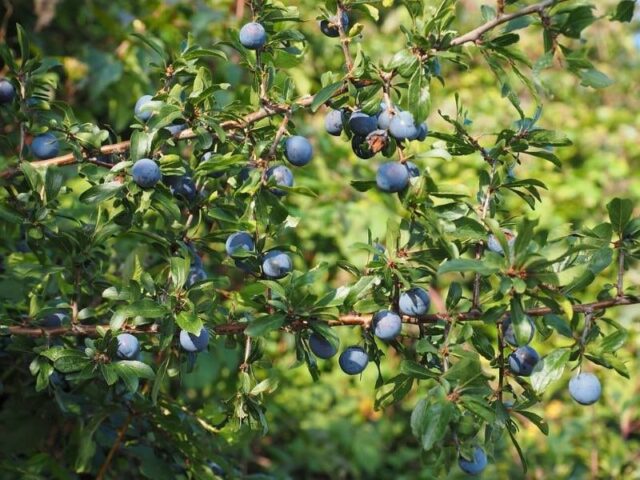
After collection, foliage, roots and bark retain their beneficial qualities for one year
Ways to store thorns
Sloe fruits are stored in the freezer. They are suitable for consumption for 6-12 months. Before laying, the thorns are washed, laid out on a towel to dry, and the seeds are removed. It is recommended to put the harvest in small (portioned) containers, since re-freezing the product is prohibited.
Sour plums can be stored fresh for up to three months at a temperature of no more than 1ᵒC. The sorted berries are packed in cellophane. Sloes are also canned. The description says that jams, preserves, compotes, and sauces are made from it.
Another way is to dry the damsons in an electric dryer or oven. Before sending the fruits for drying, they are washed, sorted, and allowed to drain. Store the product in glass containers or fabric bags.
Conclusion
Descriptions and photos of sloe berries help you learn about the beneficial properties of the plant.In this culture, all parts have healing qualities. The main thing is to assemble and store it correctly. Otherwise, damsons can cause harm.
